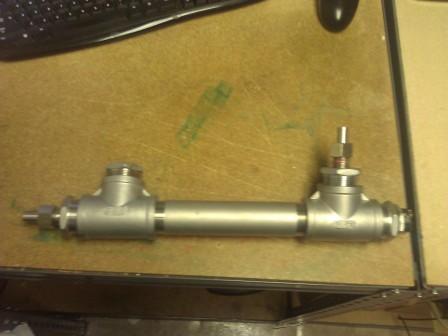I run the same setup as stlbeer. The 8' nipple going into the long end of a T winds up covering the entire length of most of your "box store" elements. Put a T on the other end and your sensor will be just far enough away from your element so as not to pickup every temp fluctuation. 2" versus 1.5" pipe has trade offs. The 2" pipe will hold more fluid and act as a buffer for temperature readings and temperature spikes in the event that flow (god forbid) stops or slows drastically. The downside of 2" pipe? more "dead space" to account for during the mash process and, of course, price. The 1.5" pipe is the smallest pipe you will fit a doubled-over element inside of and reduces dead space as best as possible, but you lose some of that buffering ability. That being said, I use a 4" temp probe that is 5/16" in diameter. The thermal mass of the sensor alone helps buffer temp readings, and with several nearly stuck mashes, I have found that even the slightest flow through the tube is enough to keep from scorching wort when using a super-duper-ultra-low watt density element like stlbeer mentioned.




